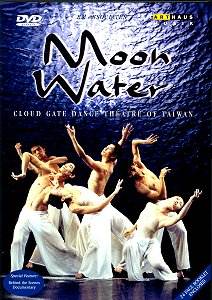Lin Hwai-Min speaks
excellent English — no surprise since
he has an advanced degree from the University
of Iowa — and he admits he is influenced
by Martha Graham. But he points out
that Martha Graham was influenced by
oriental theatre, so the circle closes.
Tai Chi is a Chinese physical/mental
meditation practice consisting of a
sequence of physical movements which
exercise every muscle in the body; many
Chinese perform it in the early morning,
often in large groups in the park, as
their equivalent of a sort of wake-up
two mile jog. But the movements, which
may be 5,000 years old, can be viewed
as a kind of dance, and that is what
we get here, 65 minutes of it performed
to the music of Bach played VEEEEEERY
SLOOOOOOWLY. Maisky’s performance is
hardly authentic Baroque practice; it
is in itself a kind of meditation, so
it fits in, amazingly well, with the
Chinese dancing.
This is not martial
arts or The Matrix. Nobody flies
through the air. Except for a few moments
of vigorous duet there is no combativeness
among the dancers. The set is a blue
surface with white tracings reminding
one of the frozen surface of a pond,
as in the "Waltz of the Flowers"
sequence in Fantasia. Some of
the numbers are solos, others duets,
some full ensembles. Everybody wears
flouncy sheer white pantaloons, the
boys shirtless, the girls with a flesh-coloured
halter. At the end there is real water
on the surface and they slide and splash.
For some of the numbers mirrors appear
above reflecting the dancers’ movements,
but rippled, as if from floating water
surfaces. The colors are blue, white,
and pale flesh, emerging out of black.
For review purposes
naturally I played the disk right through
from the beginning, but I think it would
make more sense to watch just one sequence
each day.
Paul Shoemaker
